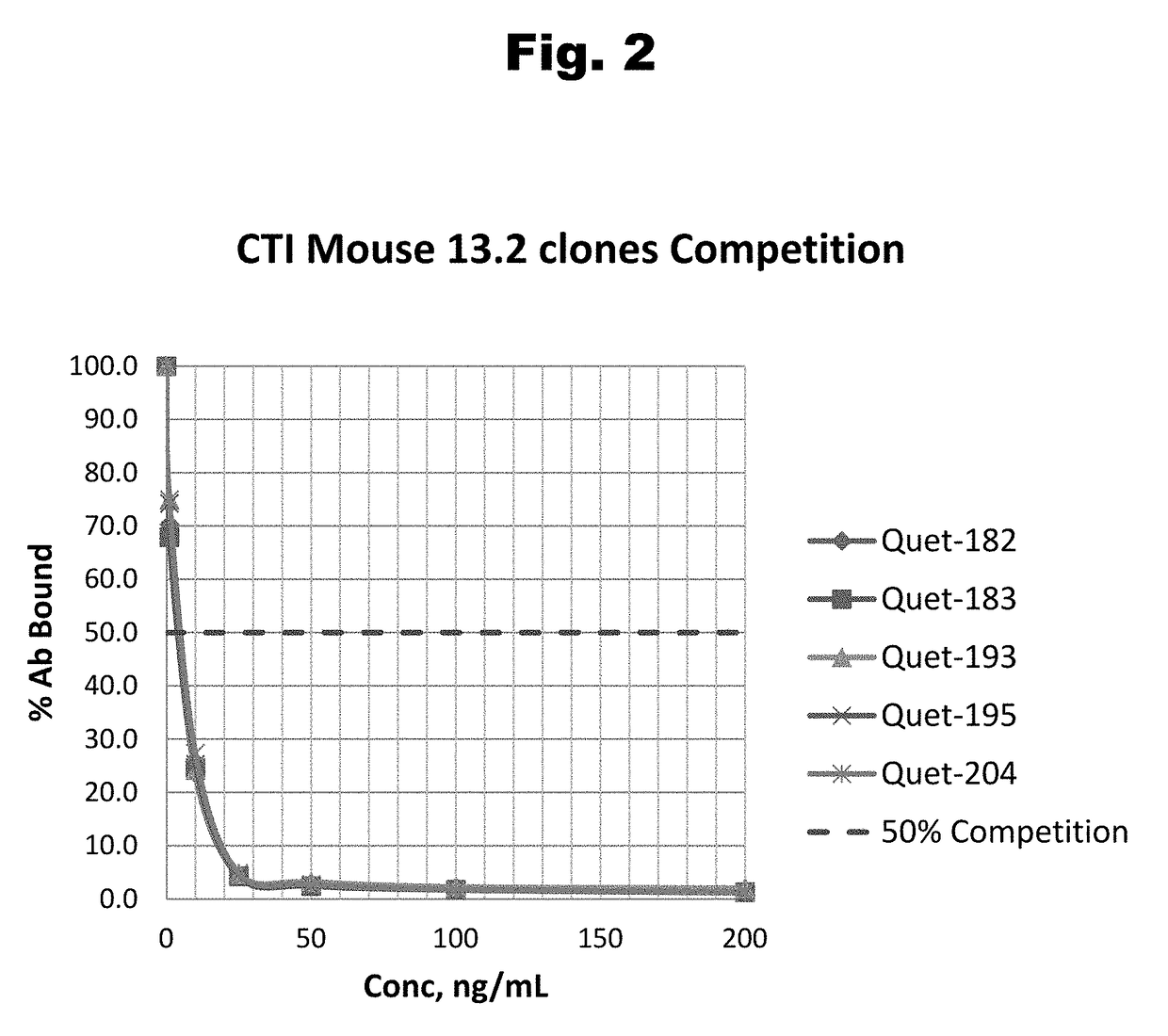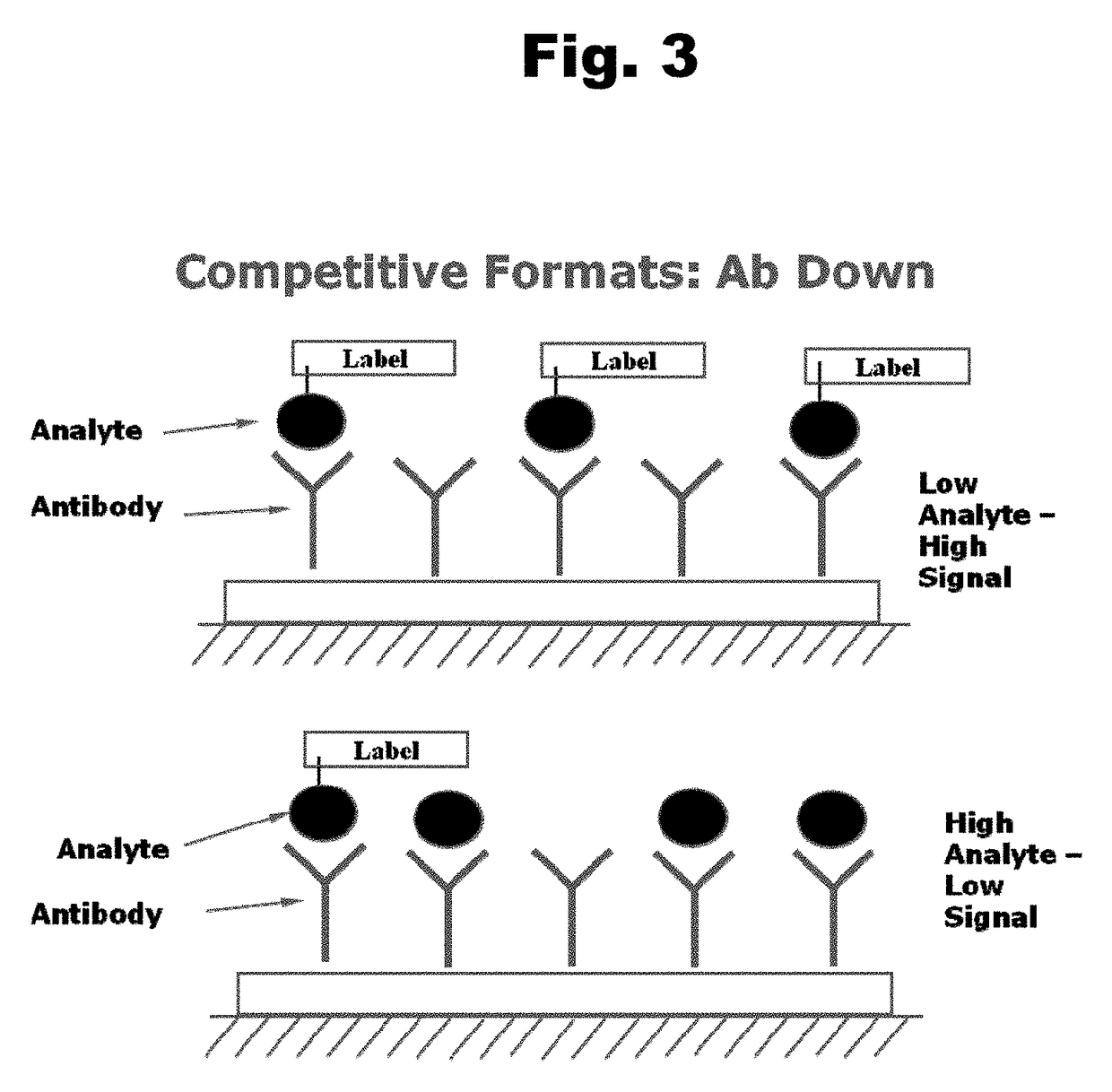Antibodies to quetiapine haptens and use thereof
a technology of quetiapine and antibodies, applied in the field of immunoassays, can solve the problems of increased mortality, poor adherence to medication, and relapse of patients with schizophrenia who do not take their medication as prescribed, and improve the survival rate of patients
- Summary
- Abstract
- Description
- Claims
- Application Information
AI Technical Summary
Benefits of technology
Problems solved by technology
Method used
Image
Examples
example 1
2-(2-(2-(aminomethyl)-4-(dibenzo[b,f][1,4]thiazepin-1′-yl)piperazin-1-yl)ethoxy)ethanol
[0193]Step A
piperazine-2-carbonitrile
[0194]
[0195]A stirred solution of tetrahydrofuran (300 mL) and ethylenediamine (108.2 g) at 30° C. was treated dropwise with 2-chloroacrylonitrile (105.0 g) over a period of 2 hours and stirred for 6 additional hours at 30° C. The reaction mixture was cooled to 20° C. and a precipitate formed. The reaction was filtered, and the filtrate was adjust pH to 4 by adding 35% hydrochloric acid. The resulting precipitate was collected by filtration. The combined precipitates were dissolved in 20% hydrochloric acid solution and then poured into THF solution to precipitate the title compound, which was dried under reduced pressure and used in the next reaction without additional purification. 1H NMR: (D2O, 400 MHz): δ (ppm) 5.00-4.97 (m, 1H), 3.79 (d, J=4.8 Hz, 2H), 3.62-3.44 (m, 4H).
[0196]Step B
tert-Butyl 3-cyanopiperazine-1-carboxylate
[0197]
[0198]To a solution of compo...
example 2
N-((4-(Dibenzo[b,f][1,4]thiazepin-11-yl)-1-(2-(2-hydroxyethoxy)ethyl)piperazin-2-yl)methyl)-2-(2,5-dioxo-2,5-dihydro-1H-pyrrol-1-yl)acetamide
[0234]
[0235]To a solution of 2-(2-(2-(aminomethyl)-4-(dibenzo[b,f][1,4]thiazepin-11-yl)piperazin-1-yl)ethoxy)ethanol, prepared as described in Example 1, (7.8 mg, 19.0 μmoles) in 410 μL of DMF and 8.9 μL of tributylamine was added 480 μL of a DMF solution of N-(α-maleimidoacetoxy) succinimide ester (AMAS, 10 mg / mL, 4.8 mg, 19.0 μmoles). The resulting solution was allowed to stir for 60 minutes at 20° C., then used as such in conjugation reaction with thiol-activated protein.
example 3
2-{2-[4-(3-Aminomethyl-dibenzo[b,f][1,4]thiazepin-11-yl)-piperazin-1-yl]-ethoxy}-ethanol
[0236]
[0237]Step A
11-Oxo-10,11-dihydrodibenzo[b,f][1,4]thiazepine-3-carboxylic acid
[0238]
[0239]A mixture of 2-amino-benzenethiol (1.34 mL, 12.5 mmol), 2-bromo-terephthalic acid (1.54 g, 6.3 mmol), cuprous oxide (0.50 g, 3.5 mmol), quinoline (6.3 mL), and pyridine (0.63 mL) was heated in a 180° C. oil bath under nitrogen for 20 hours, then cooled to room temperature. Concentrated hydrochloric acid (20 mL) was added slowly while cooling in cold water, with stirring. The resulting precipitate was filtered, washed with water, and dried to give crude title compound (2 g). LC-MS: m / z 270 (M−1).
[0240]Step B
11-Chloro-dibenzo[b,f][1,4]thiazepine-3-carbonyl chloride
[0241]
[0242]To a suspension of 11-oxo-10,11-dihydrodibenzo[b,f][1,4]thiazepine-3-carboxylic acid, prepared as described in the previous step, (0.41 g) in toluene (6.5 mL) was added DMF (0.125 mL) and thionyl chloride (6.5 mL). The mixture was he...
PUM
| Property | Measurement | Unit |
|---|---|---|
| diameter | aaaaa | aaaaa |
| diameter | aaaaa | aaaaa |
| diameter | aaaaa | aaaaa |
Abstract
Description
Claims
Application Information
 Login to View More
Login to View More - R&D
- Intellectual Property
- Life Sciences
- Materials
- Tech Scout
- Unparalleled Data Quality
- Higher Quality Content
- 60% Fewer Hallucinations
Browse by: Latest US Patents, China's latest patents, Technical Efficacy Thesaurus, Application Domain, Technology Topic, Popular Technical Reports.
© 2025 PatSnap. All rights reserved.Legal|Privacy policy|Modern Slavery Act Transparency Statement|Sitemap|About US| Contact US: help@patsnap.com



